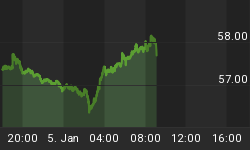Although the debt malaise in Greece has (temporarily) been addressed through an EU/IMF agreement of sorts, sovereign debt concerns will remain on center stage for quite a while.
Besides the PIIGS countries (Portugal, Italy, Ireland, Greece and Spain), the debt situation of Japan is a lingering worry and not without reason as it is the G8 country with the highest debt-to-GDP ratio - clocking in at more than 200%. Needless to say, twelve consecutive months of deflation are compounding the problem.
Commenting on the difficulty Japan may be facing to fund debt issues in future, Niels Jensen (Absolute Return Partners) said: "The first country to really feel the pinch could very well be Japan; in the bigger context, Greece is just the appetizer. Japan's debt-to-GDP ratio has grown from 65% in the early 1990s when their crisis began in earnest to over 200% now. Fortunately for Japan, the high savings rate has allowed shifting governments to finance the deficit internally with about 93% of all JGBs held domestically. This is the key reason why Japan gets away with paying only 1.3% on their 10-year bonds when other large OECD countries must pay 3-4% to attract investors.
"I often hear the argument from the bulls that the Japanese situation is sustainable because they, unlike us, are a nation of savers. Wrong. They were a nation of savers. Looking at the chart below, it is evident that the demographic tsunami has finally hit Japan. The savings rate is in a structural decline and the Ministry of Finance in Tokyo may soon be forced to go to international capital markets to fund their deficits. I very much doubt that non-Japanese investors will be as forgiving as the Japanese, and that could force bond yields in Japan in line with US and German yields. Herein lies the challenge. Japan already spends 35% of its pre-bond issuance revenues on servicing its debt. If the Japanese were forced to fund themselves at 3.5% instead of 1.3%, the game would soon be up."

It therefore came as no surprise when, subsequent to Greece's lifeline, traders moved their attention from shorting the euro to selling the Japanese yen.
Technically speaking, the Japanese economy should wave goodbye to the recession in the first quarter of this year as the country's manufacturing PMI indicates the recovery in the manufacturing sector is ongoing. However, economic growth in Japan is likely to be weak. Low consumer confidence, falling incomes and deflationary expectations should keep consumers' wallets shut. The strong yen is undermining exporters' competitiveness and adding to deflationary expectations. With Japan's strong trade links with China and other Asian countries any slowdown in these countries is likely to impact severely on its exports and therefore the current mainstay of the economy.
In my opinion, Japan's monetary authorities have little choice but to weaken the yen as this will provide a further boost to exports and eventually the overall economic recovery.
When trying to identify the primary trend of a financial variable I place most emphasis on monthly data. The long-term chart below of the yen/US dollar exchange rate indicates that the three-year uptrend is in danger of being breached, and also conveys an important message when considering the MACD oscillator at the bottom of the chart. This momentum-type indicator has just reversed course (crossing the zero line) for the first time since a buy signal was given in mid-2007, thereby flashing a primary sell signal.

Source: StockCharts.com
Turning to the shorter-term picture, using daily data, the graph below indicates that the yen/US dollar has broken both its 50- and 200-day moving averages, and has also dropped to below its February low. All the indicators in the bottom section are in sell mode, although possibly oversold in the short term, suggesting the yen may find some temporary support at its January low.

Source: StockCharts.com
It sounds like low-hanging fruit to short the yen, and a number of ETFs are available to do this. One could opt for buying a fund such as the ETFS Short Japanese Yen Long US Dollar ETF (SJPY-LSE) or, for those more aggressively minded, the PowerShares UltraShort Yen ETF (YCS-NYSE Arca). I would be happy to do this trade on a horizon of a few weeks, but the US dollar does not quite instill much longer-term confidence.
Given the recovery and relatively healthy condition of the Australian economy, and therefore wider interest rate differential, my preference will be to sell the yen against the Aussie dollar. However, I am not aware of an ETF or ETN offering this package and one may therefore have to construct the position by buying a combination (in equal money proportions) of a fund such as the CurrencyShares Australian Dollar Trust ETF (FXA-NYSE Arca) (i.e. long Australian dollar/short US dollar) and a short yen/long US dollar fund. (Of course, those in the UK can simply buy the Australian dollar/yen rate by means of a speadbetting position.) On a tactical implementation note, given the strong decline of the yen over the past few days, it is advisable to build the position in increments whenever the yen bounces back.
Did you enjoy this post? If so, click here to subscribe to updates to Investment Postcards from Cape Town by e-mail.















